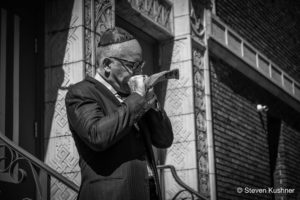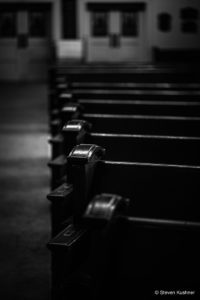Pandemic Shofar
By Steven Kushner | October 14, 2020
We’ve all had to learn to adapt. Wearing masks. Maintaining social distance. Washing our hands more than we’d like. It’s a new normal. Yet perhaps those who’ve felt it most are religious institutions. Worship—especially in Western faith traditions—tends to be communal. But in the age of Covid-19, churches and mosques and synagogues have learned to pray by Zoom. Less than ideal, to be sure.
This has been nowhere more evident than during Judaism’s High Holy Days of Rosh Hashanah and Yom Kippur. Millions of Jews gathered in front of computers and tablets and smart phones to seek renewal and atone for their failures. Still, some things could be done “on location” (as it were). Especially when it came to the sounding of the shofar—the ram’s horn—to welcome the Jewish New Year of 5781.
In Jersey City, Rabbi Leana Moritt invited her community to fulfill the mitzvah of “listening” to the sound of the shofar in a drive-by ceremony performed on the steps of the historic Temple Beth-El. It was a bright and sunny afternoon, the penultimate day of summer. And as it was done in ancient Israel, the shofar was sounded in public. For all to hear.
At the end of the Passover Seder Jews say, “Next Year in Jerusalem.” But something tells me that these High Holy Days witnessed Jews the world over praying that next year they will simply be indoors, in their customary seats, sitting next to their friends.
Copyright © 2020 Steven Kushner
Steve is a Reform rabbi who, in his retirement, found purpose and meaning in photography. Although primarily a street photographer, of late he has turned to seeing the power in images of abandoned buildings and still lifes. His award-winning work has been presented in galleries and shows in New Jersey.


